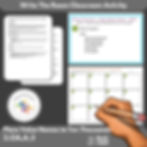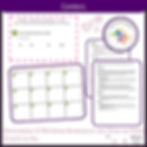Perfecting the art of feedback in the middle school classroom can transform indifferent students into engaged learners. Let's explore how to master this skill.
What You Will Learn
The importance of feedback in education
Creating a positive feedback environment
Effective feedback strategies like the sandwich method
Encouraging self-assessment and peer feedback
Utilizing digital tools and fostering a growth mindset
Timing feedback and encouraging reflection Understanding the importance of feedback in education
Understanding the Importance of Feedback in Education
Feedback is the cornerstone of learning and development, offering a mirror for students to see their progress, understand their mistakes, and recognize their achievements. It's crucial in guiding students toward self-improvement and academic excellence.
Effective feedback goes beyond just grading; it involves offering insightful, constructive comments that motivate students to improve. It's about creating a dialogue, a two-way conversation that empowers students to take charge of their learning journey.
Creating a Positive Feedback Environment
A positive feedback environment encourages open communication and mutual respect. It’s about creating a safe space where students feel valued and heard, knowing that their opinions and efforts matter.
Scenario: In Ms. Thompson’s class, students know that every piece of feedback is aimed at helping them grow. She celebrates their small successes, building their confidence and fostering a growth mindset.
Strategies:
Start with a Positive Note: Always begin feedback sessions with positive comments to make students feel appreciated.
Regular Check-ins: Schedule regular, informal check-ins to discuss progress and address concerns in a supportive manner.
Encouragement over Criticism: Emphasize what students are doing right and how they can leverage their strengths to improve other areas.
Using the Sandwich Method for Feedback
The sandwich method involves wrapping constructive criticism between positive comments. It’s a technique that helps soften the blow of criticism and makes it more digestible for students, ensuring they remain open and receptive.
Example: "Your introduction really grabbed my attention (positive). However, the middle section could use more details to support your argument (constructive). Overall, you've chosen a compelling topic and are on the right track (positive)."
Steps:
Begin with Praise: Highlight something the student did well.
Constructive Criticism: Offer a specific area for improvement with actionable suggestions.
End with Encouragement: Conclude with another positive comment or encouragement.
Incorporating Student Self-Assessment
Encouraging students to assess their work teaches them to evaluate their performance, fostering independence and self-awareness critically. It’s a practice that instills responsibility and develops their ability to self-correct and iterate on their learning process.
Activity: Provide a rubric and ask students to grade their own assignments before submission. Follow this with a reflection sheet where they can identify their strengths and areas for improvement.
Providing Specific, Actionable Suggestions
Feedback should be specific and actionable, offering clear direction to improve. Vague comments can leave students confused and discouraged. Instead, pinpoint exact areas for improvement and provide concrete steps or strategies to help them progress.
Tip: Instead of saying, "Good job," try, "Your conclusion is strong because it summarizes the main points clearly. Next time, add more examples in the body paragraphs to support your arguments."
Example: "In your essay, you have a great thesis statement. To strengthen your argument, include more evidence from credible sources."
Timing Feedback for Maximum Impact
The timing of feedback can significantly impact its effectiveness. Ideally, feedback should be prompt, given while the assignment or concept is still fresh, to reinforce learning and correct misunderstandings in real time.
Example: After a class discussion, provide immediate feedback on students' contributions to reinforce correct responses and clarify misconceptions.
Strategies:
Quick Turnaround: Aim to return graded assignments within a week.
Real-Time Feedback: Use classroom tools like exit tickets to give instant feedback.
Leveraging Peer Feedback
Peer feedback can be an invaluable tool, offering different perspectives and insights. It encourages collaboration and helps students learn from each other, fostering a sense of community and shared responsibility for collective learning.
Activity: Organize peer review sessions where students exchange papers and provide constructive feedback using a structured rubric.
Benefits:
Diverse Perspectives: Students gain insights from their peers' viewpoints.
Critical Thinking: Reviewing peers' work enhances analytical skills.
Utilizing Digital Tools for Feedback
Digital tools can streamline the feedback process, making it more efficient and accessible. Platforms like Google Classroom allow for immediate, ongoing feedback, enabling a dynamic and interactive learning environment.
Tool: Use apps like Seesaw or Edmodo to provide audio or video feedback, making it more personal and engaging for students.
Benefits:
Efficiency: Digital tools save time and allow for detailed feedback.
Accessibility: Students can review feedback at their own pace.
Fostering a Growth Mindset with Feedback
Feedback should encourage a growth mindset, underscoring that intelligence and abilities can be developed through dedication and hard work. This perspective helps students view challenges as opportunities to learn rather than insurmountable obstacles.
Quote: Remind students that "Every mistake is a learning opportunity."
Strategies:
Language Matters: Use phrases that emphasize effort and improvement.
Celebrate Efforts: Recognize hard work and perseverance, not just results.
Encouraging Student Reflection Post-Feedback
After receiving feedback, it’s important to allocate time for students to reflect on it. This reflection can be guided through questions or prompts that encourage them to think critically about their work and how they can apply the feedback to future assignments.
Prompt: Ask students to write a short reflection on how they will use the feedback received to improve their next assignment.
Activity: Create a "feedback journal" where students regularly record and reflect on the feedback they receive.
The Power of Feedback in Shaping Tomorrow's Leaders
Delivering effective feedback is more than a teaching tactic; it's a powerful strategy to inspire growth, resilience, and a love for learning in students. By incorporating these methods into your teaching practice, you're not just providing feedback; you're nurturing a generation of thinkers, problem solvers, and, most importantly, lifelong learners.

































